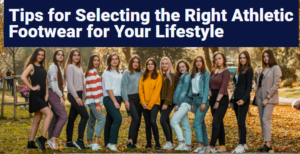Monica Pais: Effetto Palla Onlus and the life dedicated to love for animals
The non-profit association Effetto Palla Onlus welcomes stray and injured animals, treats them and looks for a new family for them. In Sardinia and beyond. The founder Monica Pais tells us about the projects and the spirit of the non-profit organization.

When in 2016 they recover a pit bull dog on the outskirts of Terralba, in the province of Oristano, the ASL operators cannot believe their eyes. She is skeletal but has a swollen and misshapen head . This is because, when she was still a puppy, she had a nylon string tied around her neck which remained there, sunken, to saw her skin and muscles.
After rescuing her, the operators take the dog to the Duemari veterinary clinic in Oristano , known for its dedication to “scrap”, battered strays who are treated and given up for adoption. There her path meets that of Monica Pais , a stubborn veterinarian who takes care of her, helps her recover and welcomes her into her family, with the name of Palla .
Palla’s images cannot leave you indifferent and bounce from one Facebook wall to another. Soon, the dog becomes a symbol . A symbol of the drama of abandonment, of blind human cruelty, but also of a second chance that belongs to any creature.
Inspired by this story, Monica Pais brings together a team of veterinarians and volunteers and gives life to the non-profit association Effetto Palla Onlus , a network of structures and operators that help stray, injured and abandoned animals. They welcome them, take care of them and look for a new family for them. Monica Pais tells us about the projects and the spirit of the non-profit organization .
In parallel to its main mission, which is to rescue animals in difficulty and find them a new home, Effetto Palla Onlus manages many projects, in Sardinia and beyond. Can you mention the most important ones that are currently underway?
We are following various projects , some of which are international, very beautiful and original. In Brazil we have been collaborating for years with a local association that provides training courses for children from the favelas . Veterinary assistants who have been trained thanks to these courses will soon have the opportunity to work in a new animal clinic that we are building in the favelas São Paulo. We now operate all over the world, from Cape Verde to Kenya .
Our projects are all circular . Our mission is to take care of nobody’s animals, but by doing so we also support the humans who take care of them, because each of us also volunteers to improve ourselves .
We work a lot here in Sardinia too , for example with our campaign for the sterilization of bitches and cats which by now has reached important numbers: we are talking about 600 cats, while the number of bitches is lower due to greater logistical difficulties. In agreement with the local veterinarians, the non-profit organization sterilizes persistent cats in unrecognized colonies and, therefore, completely at the expense of the volunteers who take care of them. In addition, we have already distributed food worth over 200 thousand euros to the animals that were left with nothing to eat after the fires on the Montiferru .
Some data speak of 66 thousand stray dogs in Sardinia, 8,900 in kennels. Is the situation really that bad and why?
The situation is critical because ours is a region with just over one and a half million inhabitants and many rural areas . Often the dogs of breeders and shepherds are not microchipped , they escape any statistics and are the incunabulum of vagantism. Yes, because here there are no stray dogs like in Sicily or Calabria, but wandering dogs. ” Wandering ” means that they can be traced back to a life with the man, from which they have voluntarily departed or because they have not been properly followed. The lack of microchips makes them strays when perhaps they are hit by a car or are in trouble for other reasons.
The ASL of Naples has been providing a camper for free microchipping dogs, cats and ferrets for some years. Can this be a useful measure?
It could be useful, but I doubt that it will take root here to the point of affecting the phenomenon of wandering animals. For the breeder, the dog is a working animal . In theory, it should be mandatory to census all animals living in environments where food for human use is produced, but this does not happen, also because there is a continuous turnover. And it is not just a problem for breeders, because even the dogs owned in small villages are often not microchipped . It is really a question of mindset. We really try to sensitize people . We explain that coexistence with the dog cannot be separated from its recognition in the family, a recognition that also passes through identification ..
He recently published a book entitled “With their eyes: Dogs, cats (and more): a small manual for conscious adoption”. What are the most common mistakes that are made, perhaps in good faith, when adopting an animal?
I am pretty sure that many mistakes are made in good faith or, at least, I want to believe them. There are issues that many people do not know and, therefore, cannot evaluate: so maybe they choose animals for fashion or aesthetic taste , only to find themselves grappling with huge problems . So I wrote a sort of compendium of things you need to think seriously about before getting an animal. Especially when dealing with a dog, it is essential to be aware of what you are, what you do and what you can offer . Otherwise, you risk enormous problems.
So everything also stems from a lack of knowledge of the animal that is about to be introduced into the family?
The needs of all dogs are always the same, with some differences related to breed and size, but people don’t always investigate their possibilities thoroughly . It is a bit like buying a bicycle even if you hate pedaling: the bicycle will be beautiful but it will remain in the garage. Unlike an object, however, the dog suffers. If his owner hates walking and prefers to spend the weekend on the sofa in front of the TV, the dog will be miserable. I don’t want to stigmatize anyone’s lifestyle, I just want people to analyze themselves more seriously , a bit like they do when they decide to have a child.
There is also the habit of buying purebred animals, perhaps relying on disreputable sellers who offer the lowest price. What are the risks?
Some breeds should be banned . The possession, reproduction and sale of all brachycephalics , especially small ones such as pugs, French bulldogs and English bulldogs, should be prohibited. This is because the selection towards hypertype has led to the creation of heart-disease dogs, which struggle to breathe, dogs that in nature would never have survived. From an ethical point of view it is a disaster .
That said, can you buy puppies from safe breeders? Certainly there are reliable breeders, you cannot make a bundle of all the grass, and turning to them gives a good chance that the dog is not affected by recognized defects, except those related to the breed. Certainly you should never buy dogs whose origin you do not know or who come from non-European countries . That said, my position is clear: if you want a dog, take a tour of the kennel .
























+ There are no comments
Add yours